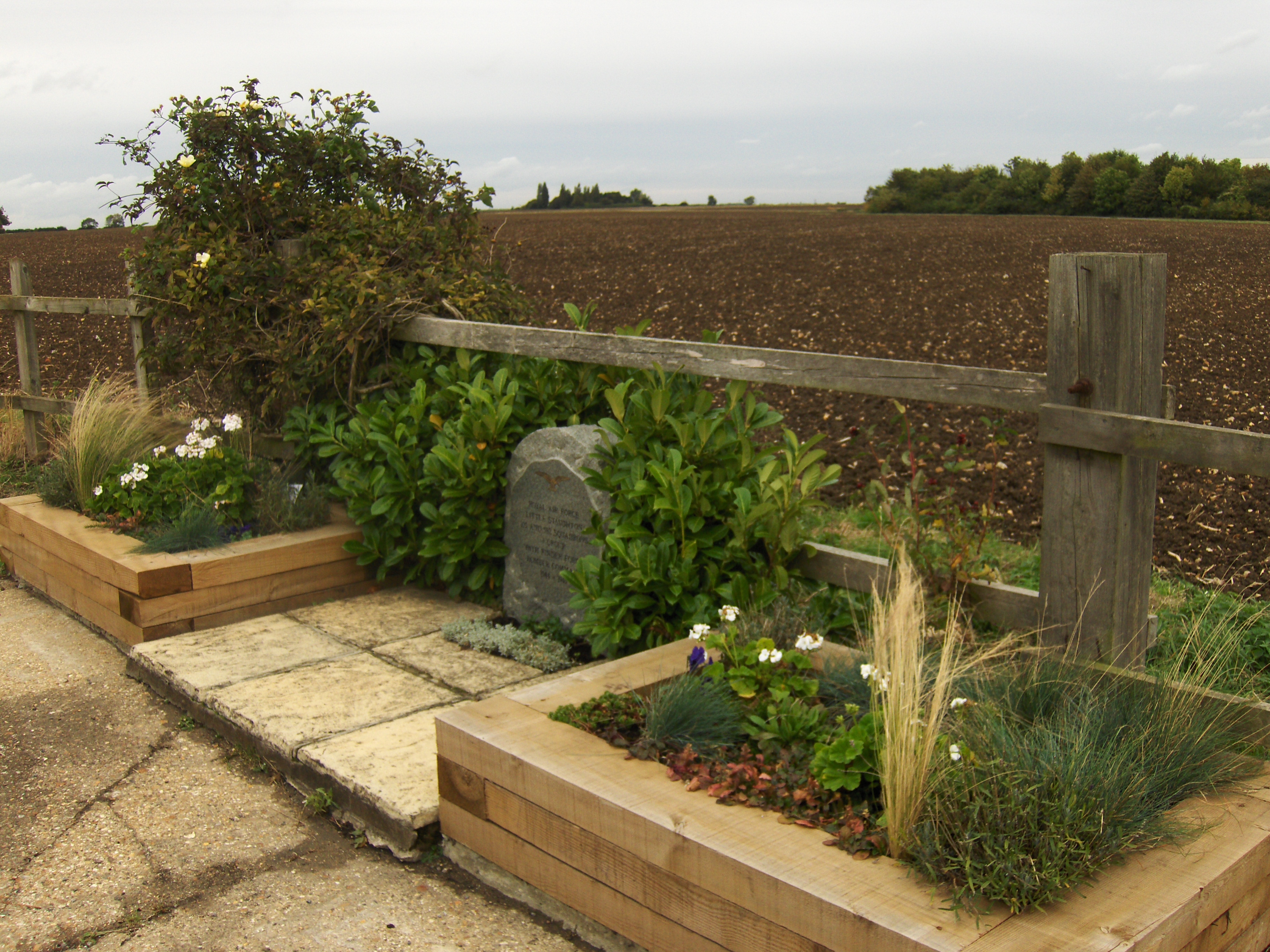| DSO Citation: "Wing Commander Jeudwine has now completed a total of 67 operational sorties, of which 33 were carried out by daylight in the Far and Middle East. He has done 14 sorties since he was recommended for his last award. Since the beginning of May 1944, he has been employed as a Group Controller (Master Bomber), in which capacity he has carried out twelve sorties including the attack against Brunswick on 22/23 May 1944. This role necessitated his remaining in the immediate vicinity of the target at low altitudes for very long periods, thus exposing himself unduly to the enemy ground air defences. It is worthy of note that his last two sorties were undertaken whilst he was employed as Air Staff Officer at this Headquarters - a Staff appointment which normally does not place any obligation on the holder to participate in operational flying. Moreover on both these occasions he flew in a type of aircraft new to this Group and to himself, i.e. the Lightning, single-seater, which calls for the most accurate D.R. navigation. It is difficult to single out any particular mission or special commendation. On all of them he has displayed a keen relish for operations, an unusual determination to complete his allotted task successfully, and exceptional gallantry. On many occasions he had to contend with heavy anti-aircraft fire and potential attacks from enemy fighters, but these did not deter him from remaining in the target area until his job was done. Two typical examples were the attacks against the ammunition depot at Salbris (7/8 May 1944) and the river bridges at Caen (12/13 June 1944). The first attack was carried out under conditions of full moon and in the face of strong enemy fighter opposition. Nevertheless, Wing Commander Jeudwine remained in the target area for over 30 minutes, and whilst on his own bombing run was twice attacked by a Dornier 217. Displaying his customary fortitude he completed his bombing run and then proceeded to adopt such efective combat manoeuvres as to render the enemy’s fire nugatory. On the second occasion he was flying in a Mosquito, and on reaching the target area his port engine was hit by anti-aircraft fire and put out of action. Notwithstanding the act that he was then at a height of only 1,000 feet and in the midst of a very "hot" anti-aircraft area, he postponed his return to Base until he had handed over control to his Deputy and had satisfied himself that the attack was progressing smoothly. For his outstanding operational record, and his exceptional conduct, particularly during the past three months, this gallant officer is strongly recommended for the immediate award of the Distinguished Service Order." On 5 August 1944, Air Vice-Marshal Sir Ralph Cochrane, Air Officer Commanding, No.5 Group, added his remarks: "Wing Commander Jeudwine first commanded No.619 Squadron in this Group and during his period of command raised the squadron to a very high standard of operational efficiency. He was then selected to fill one of the new appointments of Group Master Bomber, in which he succeeded brilliantly. I strongly recommend an immediate award of the Distinguished Service Order for his outstanding operational record set out in the foregoing citation." This was duly approved on 11 August 1944 by Air Chief Marshal Sir Arthur Harris, Air Officer Commanding-in-Chief, Bomber Command. |
| OBE Citation, London Gazette, 15 December 1942: "The KING has been graciously pleased to give orders for the following appointments to the Most Excellent Order of the British Empire: — To be an Additional Officer of the Military Division of the said Most Excellent Order:— Wing Commander John Raymond Jeudwine (33116), Royal Air Force.
When the order for evacuation was given at Bandoeng, the squadron air crews proceeded to Tjilijap and awaited embarkation. Wing Commander Jeudwine, undaunted by the nonappearance of the ship detailed, immediately set to work to save as many of his squadron as possible from falling into the hands of the Japanese. He refused to believe that all channels of escape were closed. Wing Commander Jeudwine set out in a car to search the neighbouring ports and coast line for a suitable craft. Two lifeboats were discovered on the upper deck of a bombed ship, which he decided to use as a last resort. During his absence a party, detailed by him, set out to procure the necessary provisions and navigational equipment for the voyage. Wing Commander Jeudwine, being unable to find any other suitable craft, decided to use the lifeboats and ordered them to be lowered and made ready. During the voyage his ingenuity and sound knowledge of seamanship enabled the craft to be kept seaworthy in spite of the ever recurring mishaps to the boat and its gear. The many repairs to the broken rudder were carried out only by his resourcefulness and refusal to accept defeat. The repairs necessitated working overboard and Wing Commander Jeudwine insisted on sharing the risks of a shark-infested sea. His continual cheerfulness, courage and ability to bolster up morale was an inspiration to the whole crew, who realised that he alone would be able to bring the voyage to a successful conclusion". |

